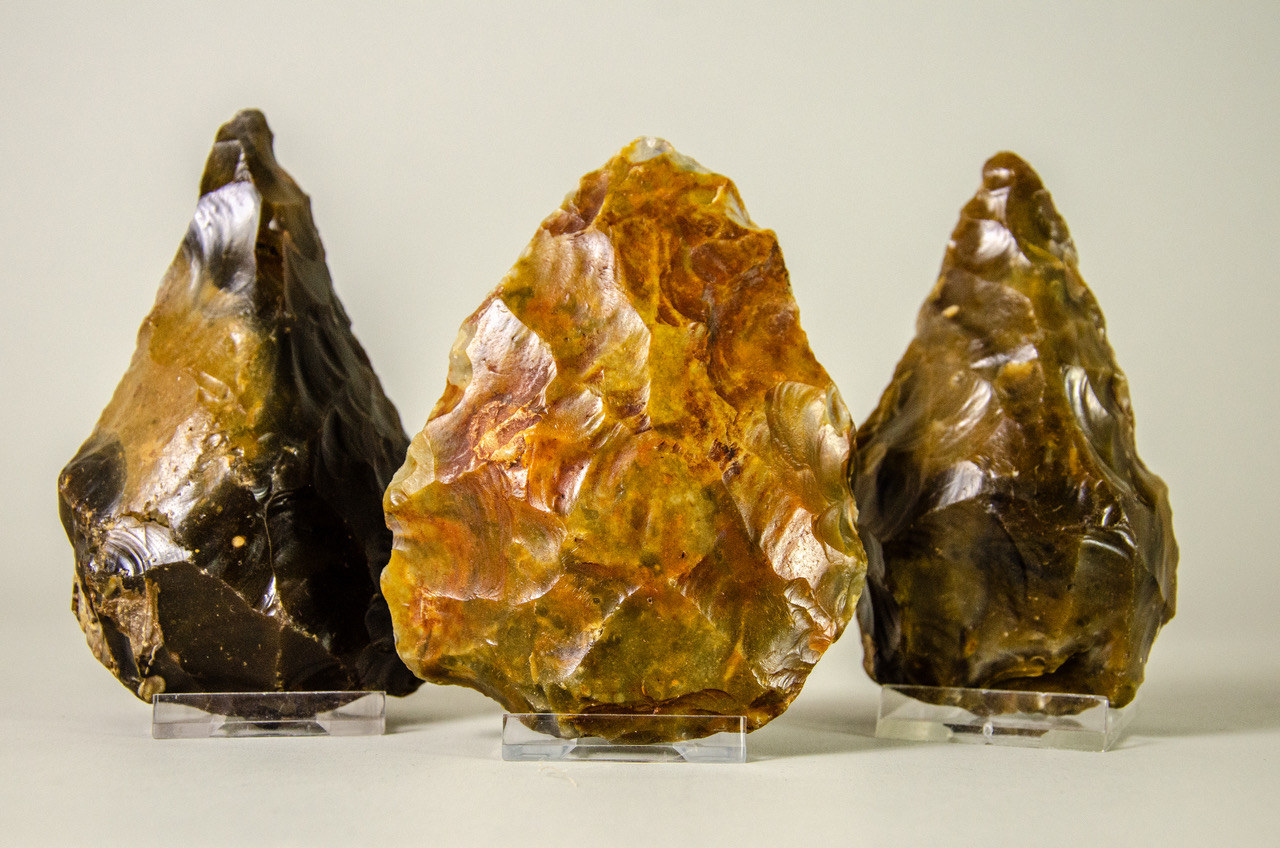The biggest private collection of rare Stone Age flint tools made by a cousin species of humans has sold for a whopping £41,000.
The incredible sum was four times its estimate of £10,000.
The prehistoric treasures are over 400,000 years old and were discovered by history buff David Blake in an old gravel pit.
READ MORE: Lucky shopper finds out £3 charity shop ornament could be worth over £900
- Advertisement -
Most are lower Palaeolithic flint hand axes, but mesolithic and neolithic items are also included in the 68-strong collection.
The hand axes have been referred to as the ‘Swiss Army knife of the Palaeolithic’.
They likely had multiple uses, including butchering, digging, and working with wood, hide, and furs.
Carpenter Mr Blake, who died 10 years ago, found them on the foreshore between Herne Bay and Reculver, in Kent, between 1987 and 2013.
They are thought to have been made by Homo heidelbergensis – the most likely human species in Britain at the time they were made, as reported by What’s The Jam.
- Advertisement -
Mr Blake’s daughter, Sharron Blake-Allan, said he had an amazingly sharp eye.
“He’d be out in all weathers, sorting through flint falls,” she said.
“He found everything from axes to arrowheads to coins and sharks’ teeth, too.”
- Advertisement -
The haul was described as an exciting opportunity for any collector who wanted an exceptional example of early man’s history.
The Reculver site is one of the most important in Britain as it was one of the first areas where palaeolithic tools were first recognised in 1860.
Since then, many hundreds of hand axes have been found, but they rarely come up for auction.
An excavation revealed that the sands and gravels exposed in the cliff face where the palaeolithic tools were found were formed by an ancient course of the River Stour in a warm interglacial period about 410,000 years ago that lasted up to 10,000 years.
Since then, there have been at least three other similarly warm periods, separated by cold ice ages.
During warm periods, Britain was occupied by different human species, including Neanderthals and ultimately Homo sapiens.
Each tool has taken 20 minutes to knapp into its desired shape, which required complex thought.
Ancient humans had brains approaching similar sizes to modern humans and may have even been capable of abstract thought.
All of the tools balance the functional solidity of stone with delicate scalloping around the cutting edges, revealing gleaming translucent colours including shades of greys, gingers and browns.
In 2000, while looking for hand axes on the beach near Reculver, Mr Blake met John Wymer, one of the country’s leading palaeolithic archaeologists.
Mr Wymer recorded in his notebook that the likely reason he hadn’t found any hand axes in the last decade was probably due to David’s collecting.
The tools were sold by Canterbury Auction Galleries, Kent.
READ MORE: Christmas comes early at Morrisons as stunned shopper spots festive display

















